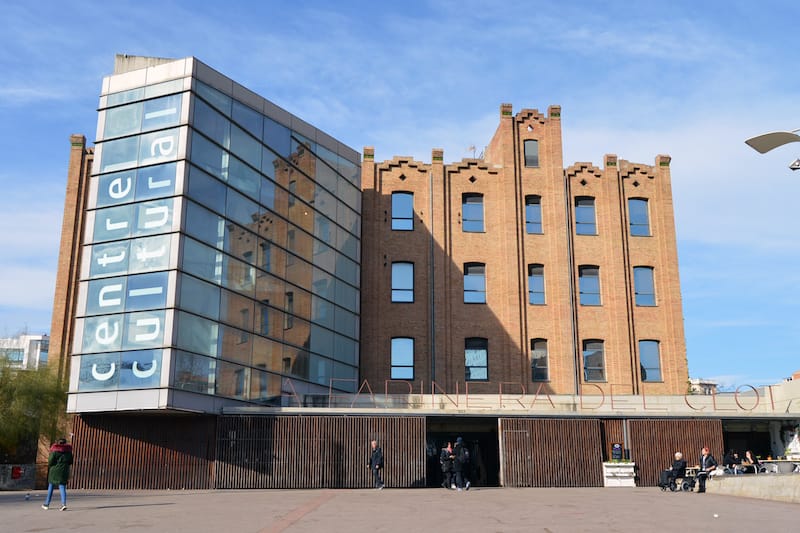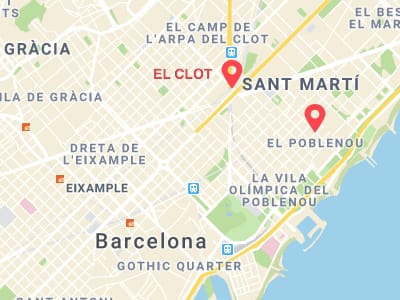As the calendar year turns over, we’ve grown accustomed to the barrage of lists telling us where to travel during the next 12 months. Oftentimes these places are a country or even a whole region – you could spend an entire year exploring just one of the locations listed and still barely make a dent.
We like to travel on a smaller scale. Forget countries and cities, for us the neighborhood is the ideal unit of exploration. Celebrating neighborhood life and businesses is, of course, essential to what we do as Culinary Backstreets. Since our founding in 2012, we’ve been dedicated to publishing the stories of unsung local culinary heroes and visiting them on our food walks, particularly in neighborhoods that are off the beaten path.
Last January, we declared 2018 as “The Year of the Neighborhood,” and what a fruitful year it was. We had our fair share of fresh experiences and were also able to contribute to the economies of neighborhoods otherwise neglected by the tourism industry. Tourism is an important economic force in many cities, as it should be, but if it is not dispersed responsibly, it can devastate the urban ecosystem, one that’s based on the sound health of all of a city’s neighborhoods.
With that in mind, we are happy to again focus on neighborhoods off the main tourist trail in 2019, as well as the people and places that keep them going. Below is a compilation of the less-visited areas that our correspondents are planning to explore this year:

Barcelona: El Clot and Poblenou
 Northeast of Barcelona’s polished Modernist center and rebuilt Gòtic alleys, the Sant Martí district straddles the line between past and future. It represents a fascinating spectrum of Barcelona, a place charged with tons of real power: some of the most exciting projects in the city like 22@ district, a hub for tech companies and start-ups, sit alongside traditional markets and long-standing modest homes. Yet this range is best experienced in two adjacent neighborhoods, El Clot and Poblenou.
Northeast of Barcelona’s polished Modernist center and rebuilt Gòtic alleys, the Sant Martí district straddles the line between past and future. It represents a fascinating spectrum of Barcelona, a place charged with tons of real power: some of the most exciting projects in the city like 22@ district, a hub for tech companies and start-ups, sit alongside traditional markets and long-standing modest homes. Yet this range is best experienced in two adjacent neighborhoods, El Clot and Poblenou.
Originally a rural village whose life centered around a medieval religious order, El Clot is perhaps the oldest area in the district. The neighborhood has somehow retained this village feel, even in the face of large-scale industrialization that transformed the area in the 19th century – farms and fields were replaced by factories and workshops of all sizes. The subsequent influx of workers led to the creation of municipal markets like Mercat del Clot and a flourishing of workers’ taverns, many of which eventually morphed into restaurants like the great Can Pineda.
Similarly, the neighborhood of Poblenou swelled with residents in the 19th century, as people from all over Catalonia and Spain came to find work. In addition to its own municipal market, many local spots continue to speak to this industrial past, like the restaurant Els Pescadors, a former tavern where textile workers and fishermen – who were often one in the same, as many factory workers earned a little extra by fishing along the nearby beaches – met over plates of seafood, and the classic bodega, La Pubilla de Taulat, which has sold bulk wine for over a century.
But as close as the past can feel, there’s still quite a bit of distance between the steam engines and carbon pollution of the 19th- and 20th-century factories and the eco-efficient architecture of the Media-TIC building, designed by Enrique Ruiz Geli and built in 2010, and the changing colored lights of Jean Nouvel’s Glòries Tower, built in 2015. Many forward-focused bars and restaurants have also sprung up, like Els Tres Porquets, a contemporary restaurant specializing in an ambitious menu of small plates intended for sharing.
Perhaps no place better bridges the past and present in this area than L’Artesana. The restaurant’s name pays tribute to an old workers’ cooperative, while their contemporary takes on traditional recipes appeal to the 21st-century workers looking for a satisfying and affordable lunch – in some ways, not much has changed at all. – Paula Mourenza
Click here to read the full neighborhood guide.
 January 14, 2019 Going Deep
January 14, 2019 Going Deep
As the calendar year turns over, we’ve grown accustomed to the barrage of lists telling […] Posted in Elsewhere January 14, 2019 Going Deep
January 14, 2019 Going Deep
As the calendar year turns over, we’ve grown accustomed to the barrage of lists telling […] Posted in Naples, Special category January 14, 2019 Going Deep
January 14, 2019 Going Deep
As the calendar year turns over, we’ve grown accustomed to the barrage of lists telling […] Posted in Porto, Special category
Published on January 14, 2019
Related stories
January 14, 2019
Elsewhere | By Culinary Backstreets
ElsewhereAs the calendar year turns over, we’ve grown accustomed to the barrage of lists telling us where to travel during the next 12 months. Oftentimes these places are a country or even a whole region – you could spend an entire year exploring just one of the locations listed and still barely make a dent.…
January 14, 2019
Naples | By Culinary Backstreets
NaplesAs the calendar year turns over, we’ve grown accustomed to the barrage of lists telling us where to travel during the next 12 months. Oftentimes these places are a country or even a whole region – you could spend an entire year exploring just one of the locations listed and still barely make a dent.…
January 14, 2019
Porto | By Culinary Backstreets
PortoAs the calendar year turns over, we’ve grown accustomed to the barrage of lists telling us where to travel during the next 12 months. Oftentimes these places are a country or even a whole region – you could spend an entire year exploring just one of the locations listed and still barely make a dent.…













































































